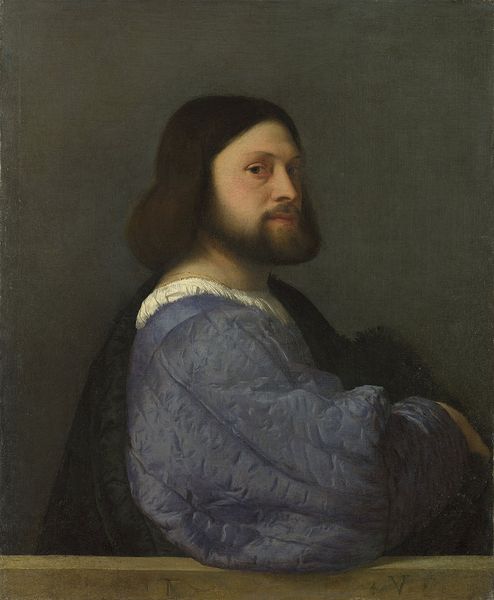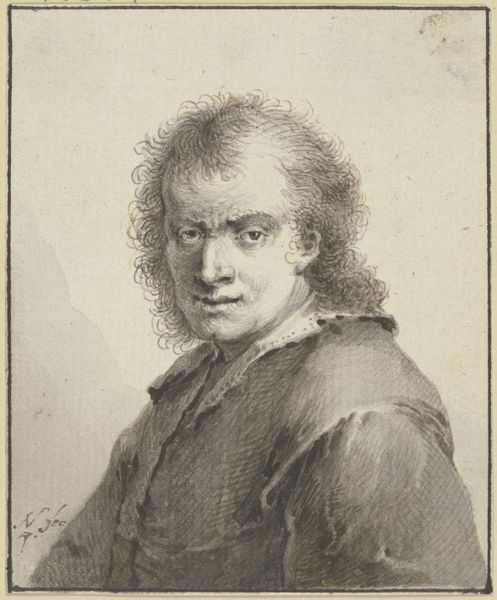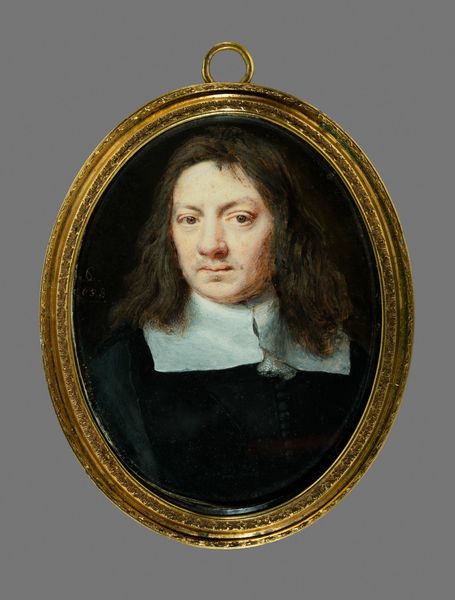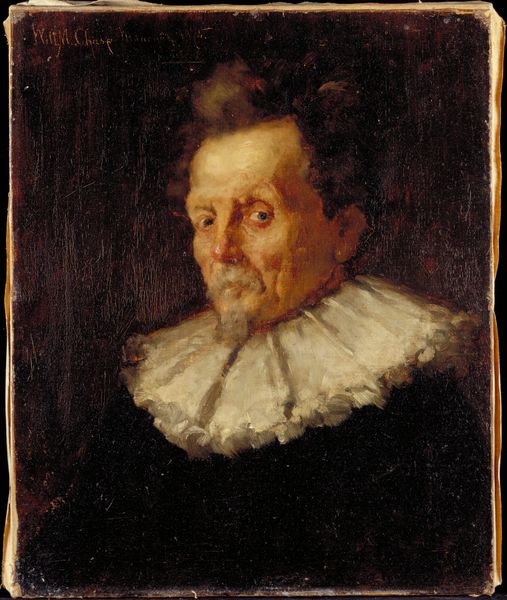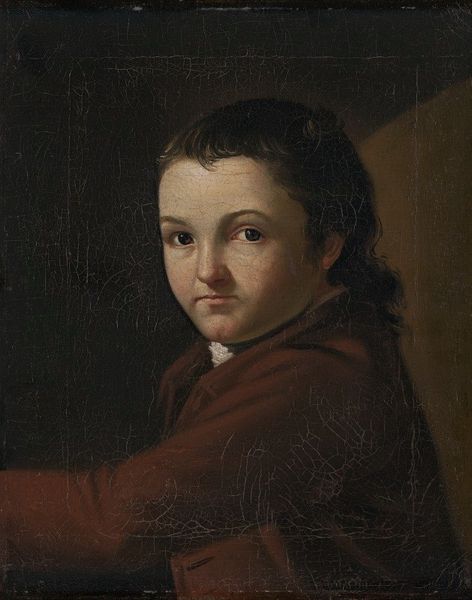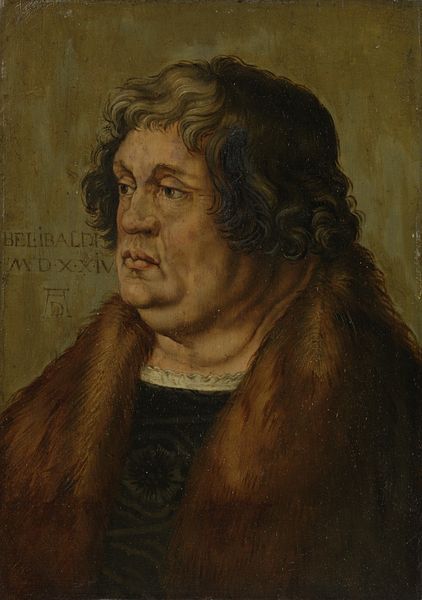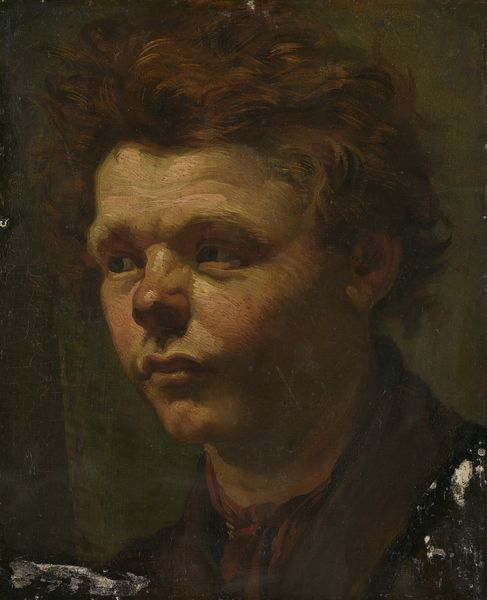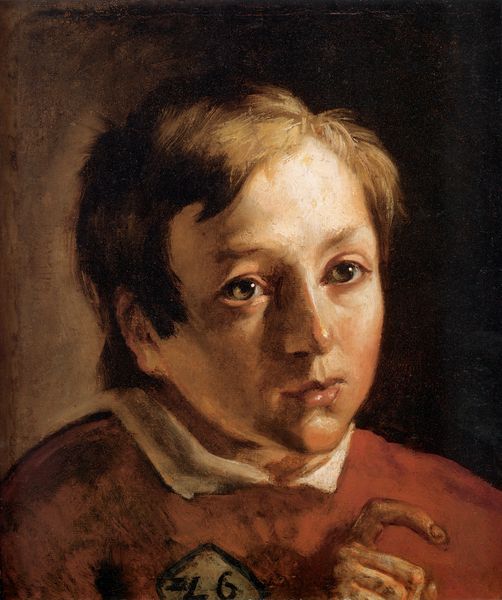
Dimensions: 42 x 54 cm
Copyright: Public Domain
Curator: I am immediately drawn to the unfinished nature of this work – it adds a peculiar vulnerability. Editor: Indeed. Before us is Otto Scholderer's "Portrait of Sir John Hebdon (1612–1670)," painted between 1851 and 1857 using oil paint. It’s a study in contrasts, wouldn't you say? Curator: Oh, absolutely! It's as though Sir John, peering out from the gloom, is daring us to guess at the secrets hidden in those half-formed brushstrokes. It feels so alive, so intimate. You know, like catching a glimpse of someone’s soul before they’ve had a chance to put on their public face. Editor: The materiality speaks volumes; the visible priming is almost jarring but serves a critical function, focusing attention toward the head and face. Consider also the interplay between the subject’s gaze and the artist’s choices. Does Scholderer seek to invite the viewer or confront them? Curator: He invites us to linger, I think. It reminds me a bit of those old family portraits you find tucked away in attics, where the sitters seem to be silently observing the passage of time right along with you. And the detail in the face! There's a whole story etched in those lines, you know? A life fully lived. Editor: Undoubtedly. While rendered with realism in mind, the Baroque influence comes through most strikingly with this kind of tenebrism, no? Observe how areas of intense shadow surround and isolate the figure; indeed, it might symbolize Sir John’s own isolation, or, rather, underscore the inherent disconnect between the man and our interpretation. Curator: Oh, now there’s a thought! Maybe that unfinished coat *is* his barrier. Hebdon is shielding himself from our gaze! So perhaps Scholderer’s captured not just a likeness, but an internal battle? Editor: It offers another dimension to the painting's narrative. By intentionally presenting it "incomplete," as you observed initially, Scholderer invites a conversation, a dialogue, one might say. Curator: That he does. Well, I, for one, am quite happy to chat away with the fellow. The magic of art, eh? Editor: Precisely. The painting persists as a site for further exploration, offering unique reflections with each engagement.
Comments
No comments
Be the first to comment and join the conversation on the ultimate creative platform.





